
Bengali rhymes with our childhood chimes
ANINDETA CHOWDHURY | Wednesday, 29 November 2023
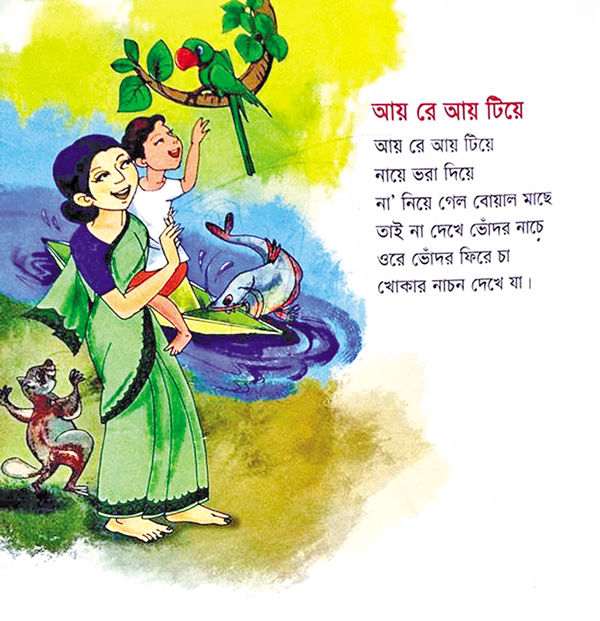 Though rhymes don't hold the aristocratic crown as poetry, especially in Bengali literature, most poets have done their work with memorable rhymes. The two most celebrated poets- Rabindranath Tagore and Kazi Nazrul Islam, are also on this list. Who could forget the ever fascinating lines from 'Lichu Chor' - 'Babuder taal pukure, habuder daalkukure…'?
Though rhymes don't hold the aristocratic crown as poetry, especially in Bengali literature, most poets have done their work with memorable rhymes. The two most celebrated poets- Rabindranath Tagore and Kazi Nazrul Islam, are also on this list. Who could forget the ever fascinating lines from 'Lichu Chor' - 'Babuder taal pukure, habuder daalkukure…'?
Bengali rhymes are supposed to provide humour and a sarcastic tone for the children to connect with. Making fun while feeding or tucking them for bedtime was familiar when today's adults were children.
There might be some controversial thoughts about naming rhymes and poetry in the same category, but there is no doubt that these two maintain very different characteristics. In a way, rhymes are lighter than poetry, and there is no looking for depth or reading between the lines, which seems easier to do while introducing someone to literature. 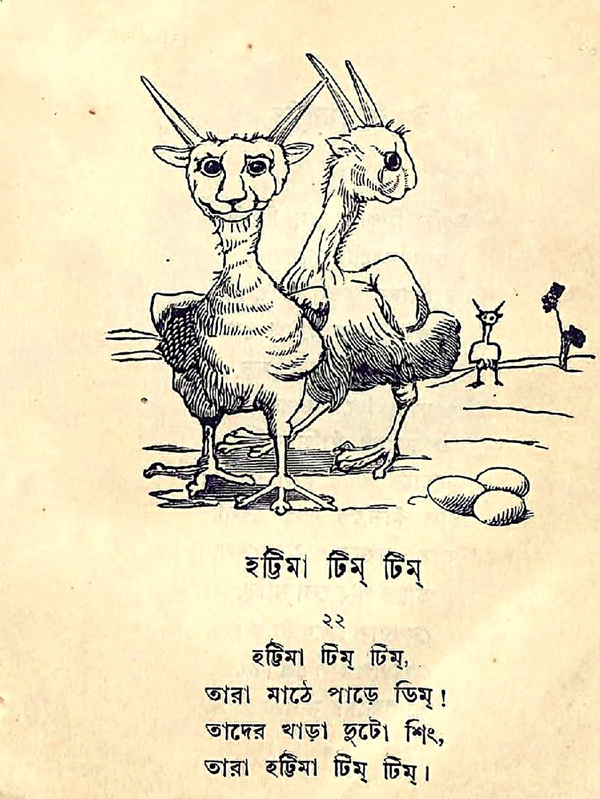 Rhymes are there to enjoy and share. This arena of Bengali literature is called 'Chhora,' which offers an enjoyable way for writers to use humour and imagination. Even when writers go through a block, they can always use some wordplay and bring some freshly baked rhymes.
Rhymes are there to enjoy and share. This arena of Bengali literature is called 'Chhora,' which offers an enjoyable way for writers to use humour and imagination. Even when writers go through a block, they can always use some wordplay and bring some freshly baked rhymes.
Sense in nonsense
'Ek haat bolla, Tero haat shing- ure jay bolla, dha-ting-ting' or 'Hattima-tim-tim, tara mathe paare dim' might seem familiar to many of our readers as they have gone through these, especially in their childhood. One thing is common in these two rhymes. These just do not make any sense! Maybe that is why, in this world full of compulsory sense and sensibility, Sukumar Ray found these rhythmic Bengali rhymes to be necessarily nonsense and labelled them as his own 'Abol-Tabol'. For children, this nonsense makes the most sense out of it- 'Haash chilo sojaru, kemne ta jani na!'
Monjusree Chowdhury works at a bank, and between all the calculations she has to do in her everyday life, she has some non-calculative nostalgia to share with us-
"I can clearly recall the whole rhyme of 'Chhipkhan 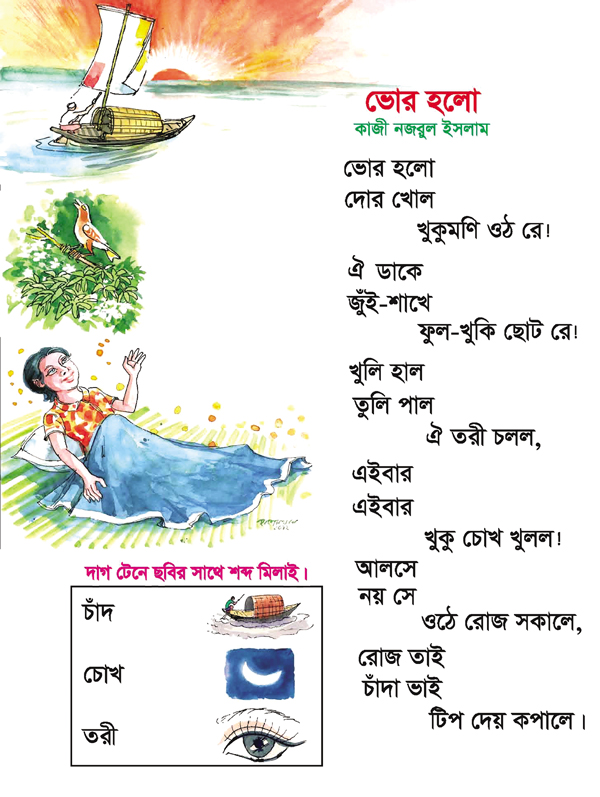 tin-dar, tinjon Malla; Choupor din-bhor dey dur palla'. No shame in telling now I did not understand a word of it. Still I memorised it and could not get it out of the system till date!"
tin-dar, tinjon Malla; Choupor din-bhor dey dur palla'. No shame in telling now I did not understand a word of it. Still I memorised it and could not get it out of the system till date!"
Maybe that's what rhymes do. They stay with us as memorabilia of our childhood. Monjusree continues, "Textbooks were not really a magnet to me. But still, I completed reading all the rhymes before anything else. I even recited them enthusiastically, which later passed to my little sister. She also used to read aloud all the rhymes and record with our tape recorder."
Bengali rhymes have been a great source of entertainment without even a touch of modern technology. This is a way to connect our minds to literature as these are easy to read and learn. Monjusree wants to pass her rhyme love to her 6-year-old son.
"I certainly want my child to know the rhymes that I learned. However, the days of turning page after page are not there like before. Still, I read him some of the rhymes as a lullaby at night. 'Aay aay chadmama', 'Khokon Khokon daak pari', 'Aay re aay 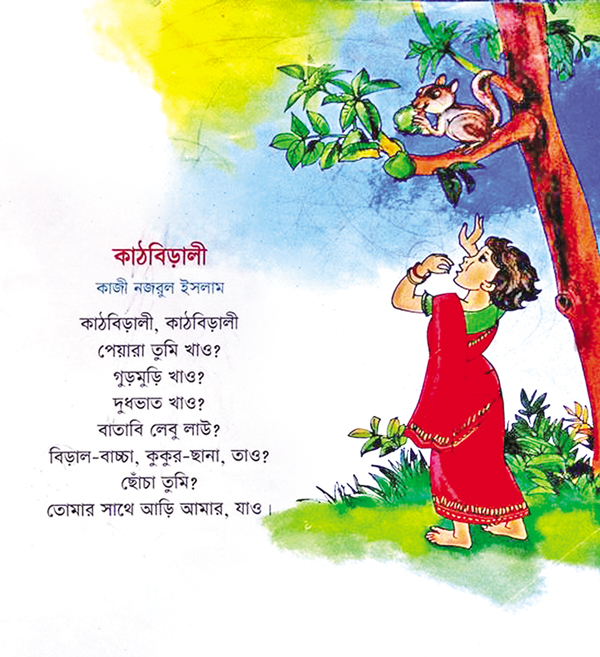 tiye,' etc., are the rhymes I recite to my son whenever I get time. He seems to enjoy these very much."
tiye,' etc., are the rhymes I recite to my son whenever I get time. He seems to enjoy these very much."
Conversational tone
Another common point of our Bengali rhymes or 'Chhora' is its conversational tone. Many rhymes are to start with a question such as 'Mona re mona, kothay jas?', 'Shunte gelum posta giye- tomar naki meyer biye?' or 'Jaccho kotha, Changripota?'.
It may have been used to engage the readers more and more so that they can practice with one another and learn it better, as conversation makes everything more memorable. And Memory is a very significant factor here. Not all the popular Bengali rhymes have an established author; many are anonymous and are still being passed on from generation to generation.
Rhymes in game
Rhymes have played a fair amount of role in many forms. Sometimes it is a lullaby; sometimes, it is for 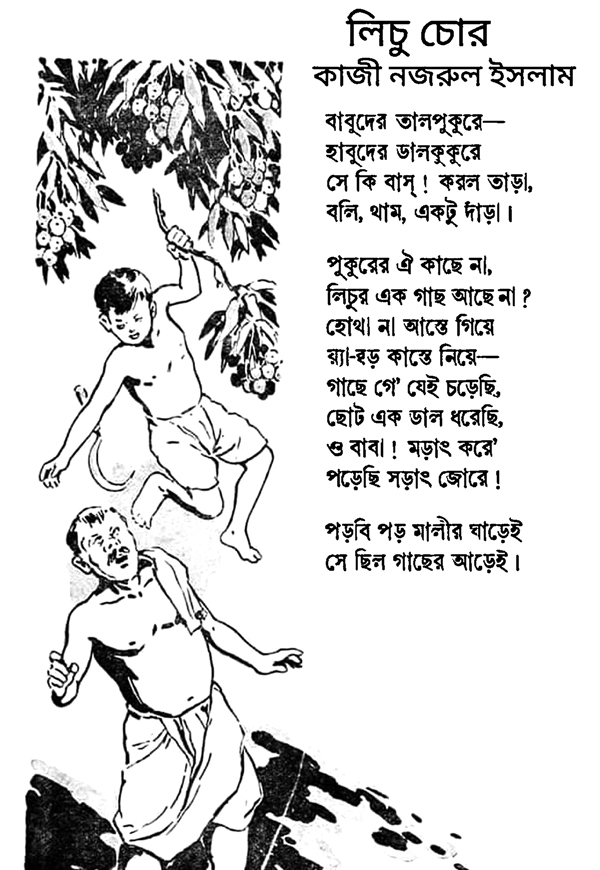 pacifying a child; sometimes, it is a good way to remember- and sometimes, it becomes a game by itself.
pacifying a child; sometimes, it is a good way to remember- and sometimes, it becomes a game by itself.
"Iching biching tiching cha,
Projapoti ure jaa
Ek lathi chondon kathi,
Chondon bole kaa kaa!"
Rural children use rhymes like this in their own games. As for this one, children jump with their legs crossed and humming word after word without making any mistakes. This simultaneousness creates such a nice harmony that even their body rhymes together.
Humorous display
As we go on with the Bengali rhymes, it is bound to be noticed that the characters described here are not from faraway lands. They can be someone from our neighbourhood-might just be a grumpy aunt or mischievous child. The context of the rhymes is mostly introduced with a fun context, even an embarrassing one, as in our culture, we tend to laugh before we recover our friends from a fall.
As happened in this rhyme- 'Rail gari jhomajhom, Paa pichhle alur dom!' A person has fallen in a muddy way, and the author is trying to compare the situation with a very popular food item- 'Alur dom' or a mushy curry of boiled potato. It is not used just to use some wordplay but also to represent a vivid visualisation by which the readers will be bound to laugh. That is what a rhyme's common destination is. A naive joke. A sheer mischief. A joyful laughter.
anindetamonti3@gmail.com